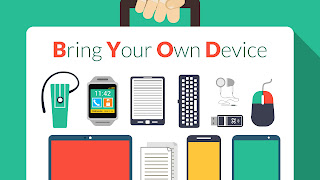Twitter Feed
AFCEA: Cyberspace at the Cross Roads
Starting December 2, 2009, the Armed Forces Communications and Electronics Association (AFCEA) will be putting on a two-day cyberspace conference. Titled “Cyberspace at the Cross Roads: The Intersection of Cyber,…
“Cloud” Shows Promise during Navy Trident Warrior
Last month as part of the Navy’s annual Trident Warrior exercise, Dataline, LLC successfully demonstrated that a standard shipboard communications infrastructure could be used to manage a commercial cloud infrastructure-as-a-service…
Government Cloud Computing Value Survey
As part of a continuing Government Cloud computing education program, Dataline, LLC has released a Government Cloud Computing Value Survey. This online resource has been designed as an aid to…
“Hyper-Standardized” Cloud Computing Environment a Plus for DISA
Henry Sienkiewcz, DISA Computer Services Technical Director, credits the cloud computing “hyper-standardized” environment for the improvement they have been able to deliver through their cloud computing initiative. During remarks at…
Army Deputy CIO Cites Army/DISA Cloud Computing Partnership
This week’s Federal Executive Forum taping highlighted collaboration between DISA and the Army on the service’s transition to cloud computing. Army Deputy Chief Information Officer Mike Krieger called it a…
Navy CIO Discusses Cloud Computing
During this week’s Federal Executive Forum taping, Navy CIO Robert Carey discussed his views on cloud computing. Stating that the NGEN and CANES (Navy Consolidated Afloat Networks and Enterprise Services)…
DoD, DHS and FBI Highlight Identity Management Interoperability
During this week’s Federal Executive Forum, key decision makers from DoD, DHS and FBI highlighted identity management interoperability as their key priority for 2010. Panelist included: Robert Mocny, Acting Director,…
EuroCloud Launches !!
Congratulations to Pierre-Jose Billotte for the successful launch of EuroCloud !! Established as a pan European network, EuroCloud are communities that represent a knowledgeable network of companies engaged local and…
Government Cloud Economics
In the The Economics of Cloud Computing, Gwen Morton and Ted Alford have published an EXCELLENT economic evaluation of the federal government’s push to cloud computing. Anyone interested in this…
Deputy CIA CIO Newest Ulitzer Author
Jill Tummler Singer, Deputy Chief Information Officer at the Central Intelligence Agency (CIA), is now a Ulitzer author. Appointed in November 2006, Ms Singer is responsible for ensuring CIA has…
- Increased employee mobility (63%), satisfaction (56%) and productivity (55%) dominate as the top drivers of BYOD. These employee related drivers are considered more important than reduced costs (47%).
- Security (39%) and employee privacy (12%) are the biggest inhibitors of BYOD adoption.
- 20% of surveyed organizations have suffered a mobile security breach, primarily driven by malware and malicious WiFi.
- Security threats to BYOD impose heavy burdens on organizations’ IT resources (35%) and help desk workloads (27%).
- Despite increasing mobile security threats, data breaches and new regulations, only 30% of organizations are increasing security budgets for BYOD in the next 12 months and 37% have no plans to change their security budgets.
- 72% – Data leakage/loss
- 56% – Unauthorized access to company data and systems
- 54% – Downloading of unsafe apps or content
- 52% – Malware
- 50% – Lost or stolen devices
- 49% – Vulnerability exploitation
- 48% – Lack of control on endpoint security
- 39% – Infrequent software updates
- 38% – Compliance
1. Create your policy before procuring technology: To effectively use mobile device management (MDM) technology for employee owned devices Policy must precede technology. Also note that these policies will have broad corporate-wide implications for IT, HR, legal, and security.
- Mobile device management
- Application security assessments
- Application testing services
- Application source code security assessments; and
- Embedded device security.
This post was brought to you by IBM Global Technology Services. For more content like this, visit ITBizAdvisor.com.
( Thank you. If you enjoyed this article, get free updates by email or RSS – © Copyright Kevin L. Jackson 2017)
Cloud Computing
- CPUcoin Expands CPU/GPU Power Sharing with Cudo Ventures Enterprise Network Partnership
- CPUcoin Expands CPU/GPU Power Sharing with Cudo Ventures Enterprise Network Partnership
- Route1 Announces Q2 2019 Financial Results
- CPUcoin Expands CPU/GPU Power Sharing with Cudo Ventures Enterprise Network Partnership
- ChannelAdvisor to Present at the D.A. Davidson 18th Annual Technology Conference
Cybersecurity
- Route1 Announces Q2 2019 Financial Results
- FIRST US BANCSHARES, INC. DECLARES CASH DIVIDEND
- Business Continuity Management Planning Solution Market is Expected to Grow ~ US$ 1.6 Bn by the end of 2029 - PMR
- Atos delivers Quantum-Learning-as-a-Service to Xofia to enable artificial intelligence solutions
- New Ares IoT Botnet discovered on Android OS based Set-Top Boxes


